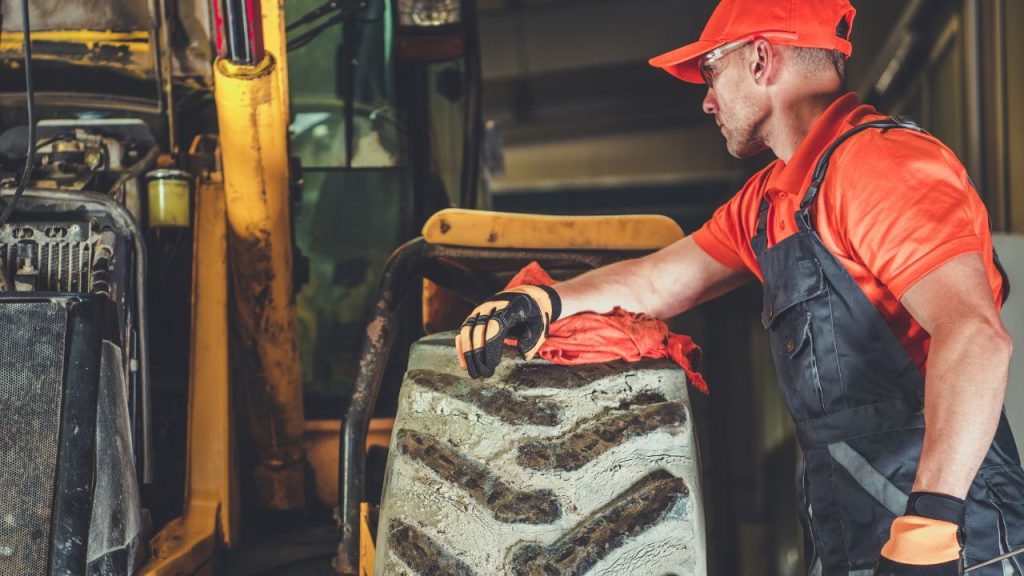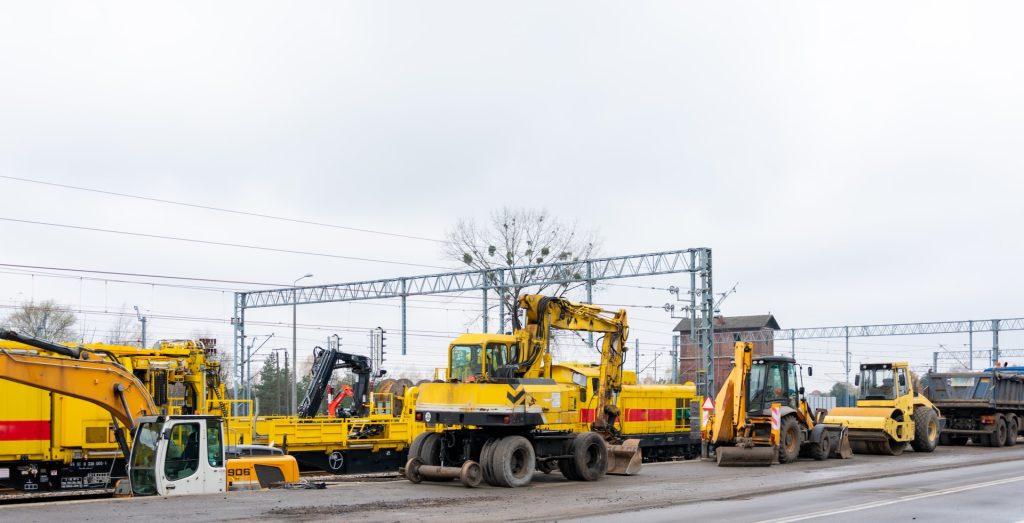As a heavy-duty machinery operator or owner, one of the most crucial aspects of maintenance is sourcing the right parts.
Heavy-duty machinery parts can be quite expensive, and the wrong purchase can lead to costly repairs, downtime, and even safety hazards.
In this blog post, we’ll provide expert tips for sourcing the right parts for your heavy-duty machinery.
1. Know Your Machinery

The first step to sourcing the right parts for your machinery is knowing the specific type of machinery and its components.
Different machines have different parts, and it’s essential to understand what you need.
The make, model, and year of your machinery are also crucial as they determine the availability of parts in the market.
When it comes to heavy-duty machinery, rubber pads provide a crucial function in protecting the machinery and reducing vibration.
As a vital component of the machinery’s undercarriage system, heavy-duty rubber pads are integral to the operational stability of many types of machinery, including excavators, cranes, and other heavy equipment.
These pads are designed to absorb shock, reduce vibration, and protect the machinery from wear and tear. They come in different sizes and thicknesses, depending on the machinery’s make and model.
Knowing your machinery requires a thorough understanding of its components, their functions, and how they interact with each other.
This knowledge not only helps in sourcing the right parts but also in diagnosing and repairing faults. You can access this information from the user manual or by consulting a specialist.
2. Research and Compare Vendors
When sourcing heavy machinery parts, it’s important to conduct thorough research and compare different vendors to find the best option for your needs.
Researching multiple vendors can help you identify the most reputable and reliable suppliers, allowing you to purchase quality parts that meet your specific requirements.
One of the benefits of researching and comparing vendors is that you can find the best value for your money.
By comparing prices and delivery times, you can ensure that you’re not overpaying for parts or waiting too long for them to arrive.
You’ll also be able to identify whether a vendor has a good reputation for customer service, which can be essential if you have any issues with your parts or need additional support.
When researching vendors, you should consider factors such as their experience, certifications, and reviews from other customers.
Experienced vendors will better understand the industry and the products they sell, while certified vendors are more likely to provide quality parts that meet industry standards.
Reviews from other customers can provide valuable insights into a vendor’s reliability and product quality, helping you make an informed decision.
It’s also important to note that the cheapest option may not always be the best option. While price is a crucial factor in sourcing parts, quality should never be compromised for cost.
Opting for cheaper parts could lead to costly repairs and downtime in the long run, so it’s crucial to balance cost with quality.
3. Check for Authenticity

Counterfeit parts are a significant threat to the heavy machinery industry. Fake parts may be cheap, but they pose a considerable safety risk and can cause extensive damage to your machinery.
Ensure that the parts you purchase are authentic by checking for serial numbers, certifications, and trademarks.
To ensure that the parts you’re buying are authentic, it’s important to look for serial numbers, certifications, and trademarks.
Serial numbers provide unique identification codes that help track products throughout the supply chain.
They can also help you trace the origin of the parts and confirm whether they’re compatible with your machinery.
Certifications such as ISO 9001 indicate that the manufacturer has met the required quality standards set by the industry.
It’s also essential to purchase parts from reputable vendors with a proven track record of providing genuine parts. Avoid vendors who offer parts at suspiciously low prices or have a high rate of negative reviews.
Spending a little more on genuine parts is better than risk damage to your machinery from counterfeit products.
4. Consider OEM vs Aftermarket Parts
When sourcing parts for your heavy machinery, you have two options: OEM (Original Equipment Manufacturer) or aftermarket parts.
OEM parts come from the original manufacturer of the machinery, while aftermarket parts are made by third-party manufacturers.
OEM parts are generally more expensive than aftermarket parts, but they offer guaranteed compatibility with your machinery.
They also come with warranties and technical support direct from the manufacturer. Aftermarket parts, on the other hand, can be cheaper, but may not have the same level of quality control as OEM parts.
Choosing between OEM and aftermarket parts depends on factors such as cost, availability, and preference.
If you’re looking for reliability and guaranteed compatibility, OEM parts may be the best option. For those who are budget-conscious, aftermarket parts may be the most viable alternative.
5. Prioritize Quality Over Cost

Although purchasing cheap parts may save you money in the short term, it’s essential to invest in quality parts for your machinery.
High-quality parts reduce the risk of breakdowns, extend the lifespan of your machinery, and minimize repair costs.
This means that you’ll save money in the long run since you won’t need to replace parts frequently or pay for extensive repairs.
When sourcing parts, prioritize quality over cost. You can find quality parts within your budget by comparing different vendors and negotiating prices.
Additionally, don’t overlook the importance of warranties and guarantees, as they can protect you against defects and faulty parts.
6. Keep Detailed Records
Once you’ve sourced the right parts for your machinery, it’s crucial to keep detailed records of purchases and maintenance.
Keeping accurate records helps you to track the performance of your machinery, monitor the lifespan of parts, and plan for future maintenance.
Record keeping also helps you to identify patterns of failure and take corrective action before breakdowns occur.
You can use electronic or manual systems to keep records, depending on your preference.
Ensure that you include all relevant information, such as the date of purchase, vendor name, part serial numbers, and maintenance schedules.
Sourcing the right parts for your heavy machinery is critical to ensuring optimal performance, safety, and efficiency.
By knowing your machinery, researching and comparing vendors, checking for authenticity, considering OEM vs aftermarket parts, prioritizing quality over cost, and keeping detailed records, you can avoid costly repairs and minimize downtime.
Remember to consult a specialist if you’re unsure about any aspect of sourcing parts for your machinery. With these expert tips, you’re now equipped to source the right parts for your machinery with confidence.



